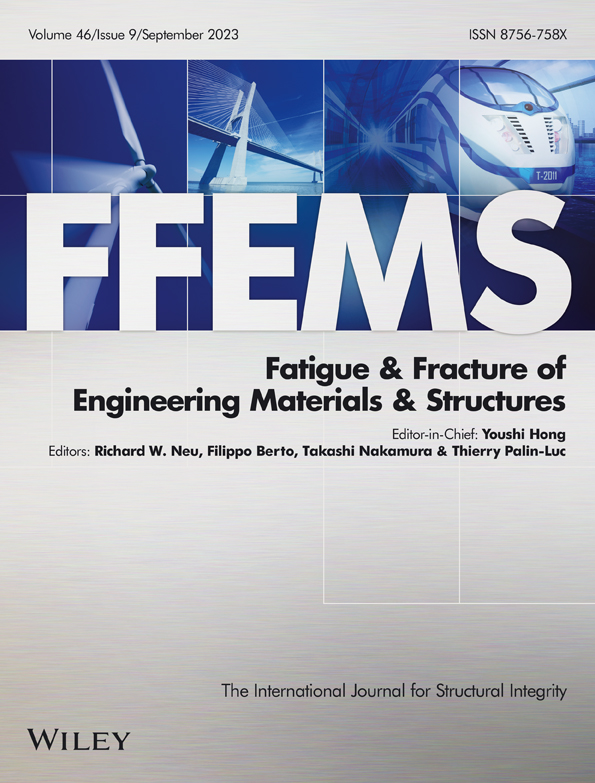A new strategy for predicting fracture of U-notched specimens made of Al-6061-T6 and Al-5083 using extended finite element method
Abstract
This research focuses on the numerical investigation of fracture loads of U-notched specimens made of Al-6061-T6 and Al-5083 under pure opening mode and mixed mode I/II loading conditions. A new methodology is introduced with the aid of the equivalent material concept (EMC) combined with the extended finite element method (XFEM) and linear cohesive zone model (CZM), and the outcomes are compared with a conventional elastic–plastic damage model. The combination of EMC and XFEM result in the numerical EMC-XFEM model, which provides a fast and accurate method to assess the notch fracture loads and crack growth path. Considering the experimental results, a trial and error loop is performed to calibrate the ductile damage model, which is much more cumbersome than the proposed EMC-XFEM model. Moreover, the computational cost of elastic–plastic model is much more than the EMC-XFEM model, although both approaches provide appropriate predictions for fracture of ductile aluminum notches.
Highlights
- The EMC is combined with XFEM and CZM for fracture prediction of ductile U-notched.
- The model is validated with the mixed mode fracture results of two ductile aluminums.
- The results are also compared with the numerical method of ductile damage.
- The accuracy and time-efficiency of the EMC-XFEM method is proven.
Open Research
DATA AVAILABILITY STATEMENT
The data that support the findings of this study are available from the corresponding author upon reasonable request.




